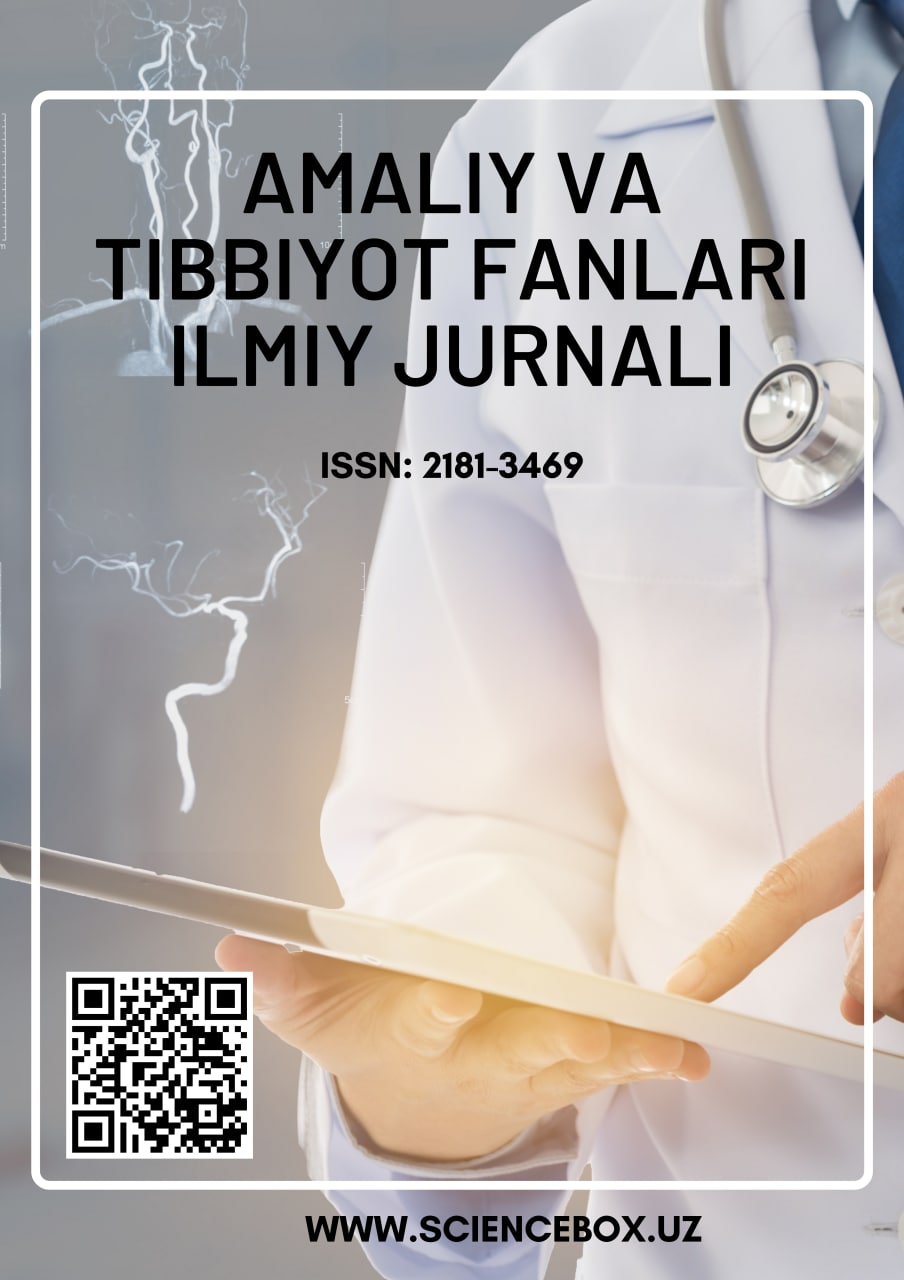EXPERIMENTAL STUDIES WORKING OUT THE OPTIMAL ANGLE OF ATTACK FOR THORACOSCOPIC DISCECTOMY
Abstract
Degenerative diseases of the spine have a large proportion in the structure of chronic back pain in children from 25 to 45 years old, that is, the most able-bodied part of the population: about 30% of the population of developed countries suffer from chronic back pain caused by degenerative processes, more than 70% of people have experienced back pain at least once in their lives, which I forced them to see a neurologist. The extreme manifestation of the degeneration process in intervertebral discs is the formation of a hernia. At the same time, different parts of the spine are prone to degenerative changes and of varying degrees, Relatively more often (in 62% of patients) lesions occur at the lumbar level, less often at the cervical (36%) and extremely rarely at the thoracic level (2%). Thus, thoracic spine hernias*, despite their relative rarity, differ in the severity of clinical manifestations (lower paraparesis, pelvic disorders), forcing surgical treatment, despite the high risk of exacerbation of existing neurological disorders, with the occurrence of lower paraplegia after surgery. At the same time, endoscopic interventions for hernias of the thoracic spine. significantly reduce the frequency of serious complications, prevent the increase of neurological disorders, reduce the duration of surgery and intraoperative blood loss. Endoscopic methods reduce the duration of the operation by an average of 2 times, the duration of hospitalization by 3 times, and reduce the period of recovery to 2 weeks, whereas with traditional mncrodiscectomy, the same indicator is 1-1.5 months. Therefore, at the current level of development of neurosurgery, when choosing a treatment method, preference is often given to endoscopic methods, as minimally invasive, to reduce surgical trauma and, accordingly, improve the quality of life of the patient in the future. However, the use of this method, in addition to the availability of special equipment (a set of endoscopic instruments), problems of sterilization of optical systems and the need for additional training for a neurosurgeon, "is associated with certain specific difficulties due to imperfection of endoscopic technique (difficulty in perceiving a two-dimensional picture of an operating wound, narrowness of the surgical channel, restriction of freedom of manipulation in the wound, difficulties in stopping bleeding, etc.). Therefore, the outfit) Along with classical and traditional endoscopic interventions, new endoscopic surgical techniques are being developed, in particular binorthalic dnscectomy.
References
Аль-Асбахи И.А. Диагностика и микрохирургическое лечениелнекогенных поясннчно-крестцовых радикулитов / Н.А.Аль-Асбахи, К.Я.Оглезнев//Вопросы нейрохирургии 1986,- № б.- С.47-53.
Бабчин И.С, К диагностике и оперативной технике удаления задней шморлеве кой грыжи при сдаьлеини спинного мозга V И.С.Бабчнн //Советская хирургия 1935.- Хр 9.- С .92 - 105.
Дестандо Ж, Эндоскопическая хирургия грыжи поясничного ЛИ ска: исследование . 562 случаев // Хирургия позвоночника, Новосибирск. 2006 №1.
Злотник Э,И. Основные вопросы диагностики и хирургического лечения раднкулярного синдрома при поясничном остеохондрозе / Э.И.Злотннк, С.Ф.Секач. РАКупршшод // Материалы 2 съезда невропатологов и психиатров Бслоруссии.-Мннск, 1980,-C.I17-119
Левошко. М. Клиннко-анатомическое обоснование микрохирургических методов лечения рыж межпочвоиковых дисков поясничного отдела позвоночника : дис канд, мед. наук / Л.М.Левошко, -М-, 1993. -182с
Матвеев В.И, Грыжи межпозвонковых жисков поясничного отдела позвоночника // дисс. на соискание дм.н. Воронеж, 2005.-338с.
Мовшовнч И. А. К вопросу о нестабильности позвоночника / И.А.Мовшовнч, Ш.Ш.Шотемор // Ортопедия и травматология 979.-Jsfe5.-C 24-29.
Хвисюк Н.И. Нестабильность поясничного отдела позвоночникадис. д-ра мед. наук / Н.И.Хвнсюк, -Харьков, 1977.-472 с





















